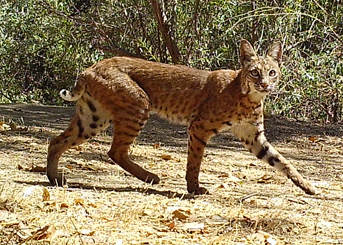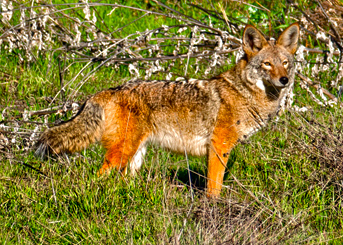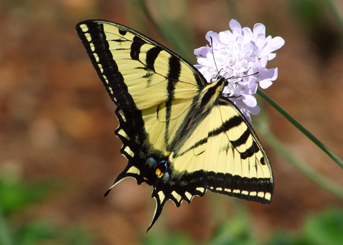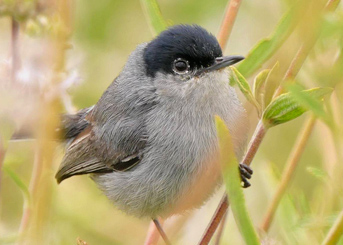The term “habitat restoration” refers to the process of restoring the functional aspects of a given ecosystem to a semblance of its pre-disturbed state. As a result of more than 100 years of human land use, much of the Puente Hills contains disturbed habitats that are now dominated by non-native vegetation. Non-native vegetation includes weeds, such as non-native grasses, mustard, castor bean, and tree tobacco that create high wildfire risk and result in low value habitat for wildlife. Past land uses that have created or contributed to disturbed habitats include livestock grazing, grading, development, intentional planting of non-native vegetation, and the use of invasive vegetation on properties adjacent to open space which then spread into natural areas. Our goal is to put our natural areas back in order for the benefit of future generations and for the wildlife that call the hills home. As such, the Habitat Authority actively restores areas by removing non-native vegetation and replacing it with native vegetation that would have been present prior to the disturbance.
Over 300 acres of Habitat Authority lands on the Puente Hills Preserve have been or are currently being restored/enhanced. This includes 194 acres of mitigation restoration that are regulated by state and federal natural resource agencies, and 119 acres of general enhancement and restoration. Restored habitats on the Preserve include coastal sage scrub and sycamore riparian habitats at the Hacienda Hills Trailhead; coastal sage scrub restoration on the former Unocal property (east of Colima Road in Arroyo San Miguel); coastal sage scrub at the Arroyo Pescadero Trailhead; and oak and walnut woodland, coastal sage scrub, native grassland, and riparian habitats in Powder Canyon.
The following are examples of habitat restoration projects on Habitat Authority lands that were either initiated and conducted by the Habitat Authority or implemented through the mitigation process with oversight by the Habitat Authority.
As mitigation for Segments 7 and 8 of the Tehachapi Renewable Transmission Project (TRTP), Southern California Edison is working with the Habitat Authority to restore 53 acres of coastal sage scrub and 7 acres of oak and walnut woodlands. The project was initiated in 2016, seeds and container plants were installed in 2018 and the sites are currently being maintained and monitored while the habitat establishes. Click here for past updates regarding the project.
Once a forest of eucalyptus, the Habitat Authority conducted coastal sage scrub mitigation on this 15-acre site. By year two of restoration, federally threatened coastal California Gnatcatchers were already using the site for breeding. The established habitat was reviewed by regulatory agencies in 2014 and received approval. The photos below were taken before restoration was initiated (2008) and six years post-restoration (2021). This project was cited in the Whittier Daily News on January 13, 2010 shortly after plants were installed and again in the San Gabriel Valley Tribune on May 8, 2016 after restoration activities were concluded.
The restoration of Coastal Sage Scrub habitat on this almost 20-acre site is facilitated by the Habitat Authority and funded by Orange County Waste and Recycling to compensate for impacts to habitat that resulted from operational activities at the Olinda Alpha landfill in the City of Brea, California. The site, which is visible just east of Colima Road in the City of Whittier, was cleared of weeds in October 2018 and then seeded and planted in February 2021 after two years of weed abatement activities. While the habitat establishes it will be continually maintained and monitored over the next several years.






7333 Greenleaf Ave
First Floor, Whittier, CA 90602
© Puente Hills Habitat Preservation Authority. All Rights Reserved.